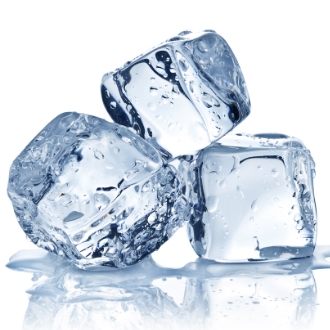 The difference between a perfect cocktail and a mediocre one often comes down to ice, which, once melted, can account for half of a drink’s volume. With so much riding on frozen water, it’s not surprising that there’s more than a little ice mythology in the mixology world. Add a blender into the equation and it becomes necessary to call on science to make sense of it all.
The difference between a perfect cocktail and a mediocre one often comes down to ice, which, once melted, can account for half of a drink’s volume. With so much riding on frozen water, it’s not surprising that there’s more than a little ice mythology in the mixology world. Add a blender into the equation and it becomes necessary to call on science to make sense of it all.
Blended vs. shaken vs. stirred
When James Bond insisted on a shaken martini, he was choosing an option both cooler and a little weaker than the stirred variety. If you look at the science of it, ice melts faster with a quick shake than a long stir, and the melting process lowers both the temperature and the alcohol content of the cocktail. So 007’s preference may simply have been a way of keeping himself sober in the service of Her Majesty.
Blending leads to even faster cooling (and, therefore, dilution) than shaking does, says Brian Williams, Chief Engineer at Hamilton Beach Commercial: “Whenever you smash the ice up, you’re increasing the surface area of the ice and the drink is going to cool faster.” So for blended drinks, it may be necessary to adjust the ice-to-alcohol ratio in a cocktail recipe to compensate for the dilutive effect of faster-melting ice.
Surface area—not size—matters
Whether you’re stirring, shaking or blending, the surface area of ice matters, as does any water that might be on the surface of the ice before it’s added to a drink. Small ice has more surface area and so it has the potential to accumulate more surface liquid particularly if the ice is sitting out at room temperature for any length of time before it’s added to a drink. Surface liquid should be insignificant, even with small cubes, if the ice is used directly from the freezer.
When it comes to blended drinks, ice consistency is really the key, according to Williams, because high-performance blenders can be programmed to accommodate ice of any hardness or size. “In restaurants in the US, the ice is generally in cube form, made by machine and pretty consistent,” noted, and “in Mexico, it might be a large block of ice they’re cutting from.” Blender programming is so precise that it can accommodate the type of ice a customer is using as well as the style of beverage he wants to produce. One tool to ensure that ice is consistent is the Revolution® Ice Shaver, which delivers ice in the precise portion for a particular drink. It also saves a step in the blending process and cuts prep time.
Ice under the influence
Alcohol will of course cause ice to melt a bit faster, which means a tequila-charged frozen margarita will become diluted a little faster than the virgin variety. But the difference is so minute that the blending times for the “real” and the mocktail versions of a particular drink will be pretty close. And then there is the practical matter of user behavior to consider. As Williams points out, “you know I’ve never done that test before . . . but in practice, the one with alcohol usually get consumed a lot more quickly.”
Ice is critical to the work of bartenders, bars, and restaurants. If you have a story that would interest your peers regarding creative and interesting applications of ice in drinks, a fun customer experience, or a unique recipe that you are willing to share with the rest of the HBC Community, we would love to hear it. The best stories will be published on our blog along with your name, and the name of your bar or restaurant. Tell us here.


